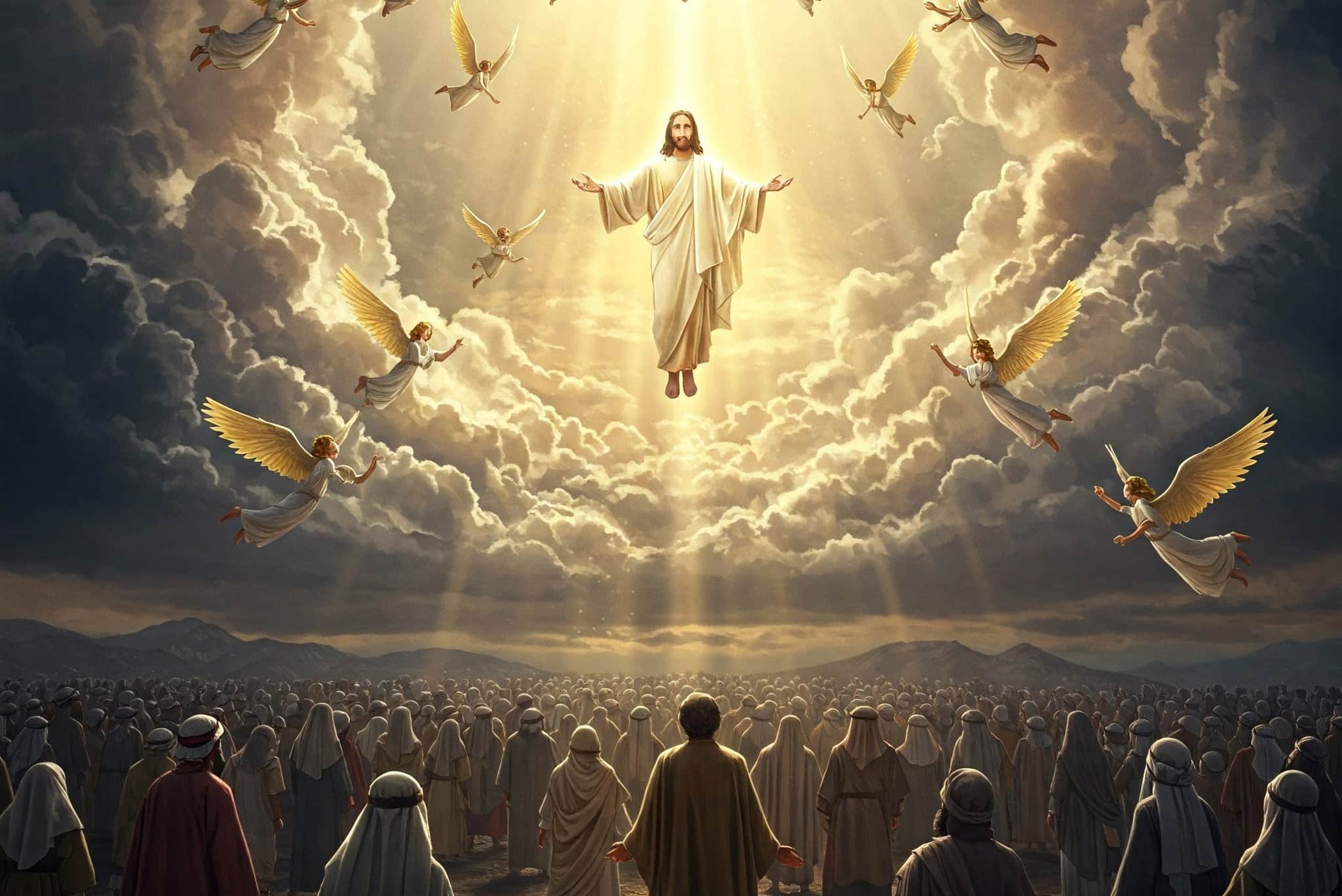

Across social media, various baseless theories about the Second Coming of Jesus claim that Christ’s return will last anywhere from 10 minutes to 1,000 years.
One recent theory suggests that Jesus will return around 2,000 years after his death and resurrection, placing it in the near future. This theory draws on cryptic biblical math and ancient prophecies, but it remains just another speculative idea among many others.
However, the Orthodox Christian Church has its own teachings on the Second Coming, based on tradition and scripture.
For the Orthodox Christian Church, this pivotal event cannot and will not be defined by human calendars. The Church teaches that the Second Coming of Jesus requires a deeper understanding that transcends time, exploring issues such as eternity, judgment, and a theological vision that has shaped Orthodox Christian spirituality for millennia.
At the heart of Orthodox tradition, the Second Coming is not a particular moment in time but the irreversible culmination of divine history. As proclaimed in the Nicene Creed, Christ will return “with glory to judge the living and the dead,” ushering in a kingdom “which shall have no end.”
Some individuals, including several Orthodox priests, believe there is a connection between the duration of the Exapsalmos—a collection of six psalms chanted during the early morning service—and the length of time the Second Coming of Jesus will last.
The Six Psalms (3, 37, 62, 87, 102, and 142) are a significant part of the Orthodox Christian service of Orthros (Matins), where they are read at the very start, early in the morning, during which the priest says twelve silent prayers. This lasts approximately ten to twelve minutes, sparking theories that this is the duration during which the Second Coming of Jesus and his judgment of humanity will last.
@patersamouil Όποιος θέλει μπορεί να βρει τα χειροποίητα θυμιάματα και προϊόντα που κάνω με πολύ αγάπη στην ιστοσελίδα μου patersamouil.gr #Ορθοδοξία #Χριστιανισμός #ΚρίσηΤουΘεού #Πνευματικότητα #Πίστη #ΔευτέραΠαρουσία #Μετάνοια #Εσχατολογία #Θρησκεία #ΑγίαΓραφή #ViralTikTok #OrthodoxFaith #Greece #Κύπρος #Deutschland #OrthodoxCyprus #GreekTikTok #TikTokGermany
This specific belief has no basis in official Orthodox Church doctrine. The established teachings of the Orthodox Church do not specify a duration for the Second Coming nor link it temporally to the reading of the Six Psalms.
In contradiction to this, some Protestant believers adhere to Western millennialist frameworks. According to these beliefs, a literal 1,000-year reign (Revelation 20:1–6) will occur on Earth, during which Jesus will ultimately judge all humans.
However, Orthodox teaching rejects these temporal constraints as God transcends time. The Divine Liturgy’s prayers—repeated for over 1,500 years—emphasize the importance for Christians to be ready anytime for an event that is “sudden, universal, and eternal.”
This perspective is not something new. This fundamental Orthodox tradition stems from early Church Fathers like St. John Chrysostom, who warned early Christians against date-setting and fixating on human calendar days, urging believers to “live as if Christ will return tomorrow.”
In this view, the “millennium,” which is mentioned in the Revelation, symbolizes the current age of the Church. It is the time that came after the death and resurrection of Jesus and is seen as a human spiritual battleground where grace and repentance prepare the faithful for eternity.
Orthodox teaching argues temporal speculation and fixating on durations or time distracts from God’s transformative call for all humans to acquire holiness through their actions and words.

A viral 2033 theory has been popularized online, fixating on a symbolic link between the date of Christ’s crucifixion and the year 2033 AD. Traditionally, Christ is believed to have died in 33 AD and therefore the year 2033 will mark a 2,000-year “Church Age.”
Proponents of this theory cite passages like 2 Peter 3:8 (“a day is like a thousand years”) and Hosea 6:3’s prophetic lines. Yet this arithmetic ignores something important: Early Christians, including the Apostle Paul, believed Christ’s return was imminent (1 Thessalonians 4:15–17), therefore they would use dates in their teachings.
Nonetheless, it’s understandable for humans to struggle to overcome the temporal constraints of our understanding. In the 4th century, for example, Byzantine monks speculated that Emperor Constantine’s reign heralded the end times and that the time of the Second Coming was near.
Medieval mystics also believed that apocalyptic visions were related to plagues, political upheavals, natural disasters, and wars. Even Isaac Newton, the renowned physicist, dedicated years to decoding Daniel’s prophecies, landed on 2060 as his calculated endpoint and the Second Coming of Jesus.
The question of the duration and timing of the Second Coming of Jesus will never cease to fascinate people and compete with various eschatological predictions. Full preterists, for instance, argue that Christ’s “coming” occurred spiritually in 70 AD during Jerusalem’s destruction, rendering a future return unnecessary. Others, like 19th-century Adventists, revived millennialism, envisioning a literal thousand-year reign post-Armageddon.
On the contrary, both Orthodox and Catholic teachings suggest that the Second Coming of Jesus will be sudden, unexpected, and unmistakable.
Both Churches also emphasize the importance of the Second Coming of Jesus as a definitive moment of judgment and fulfillment of God’s kingdom. Both reject attempts to predict its timing and duration, focusing instead on spiritual readiness and living virtuously whilst alive.
While various theories about the timing of Christ’s return continue to circulate, it is important to remember the words of Jesus Himself.
In Matthew 24:36, He said:
“But about that day or hour no one knows, not even the angels in heaven, nor the Son, but only the Father.”
This reminder underscores the fact that the timing of the Second Coming remains a mystery, known only to God.
